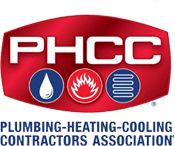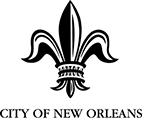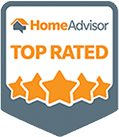
Unlock Your Home’s Safety with a Backflow Assembly Test
You’ve likely heard the term “backflow assembly test” but may not fully understand what it entails or why it’s so crucial for your home.
As a homeowner, maintaining the safety of your drinking water should be a top priority, and this test plays a fundamental role in that process. Not only does it prevent contaminants from entering your clean water supply, but it also ensures compliance with health regulations.
In this article, we explore the comprehensive details of backflow assembly tests, their importance, and the steps involved in conducting one effectively.
You’ll learn about different methods to prevent water contamination, the significance of cross-connection control certification, and how to choose the right service provider for your plumbing needs.
A Detailed Explanation of Backflow Assembly Tests
Backflow assembly tests are essential procedures performed to ensure that the mechanisms designed to prevent backflow are functioning correctly.
Backflow occurs when there is a reversal in the flow of water in your plumbing system, which can lead to contamination of your potable water supply with harmful substances or pathogens.
What is Backflow?
Backflow in a plumbing system refers to the unwanted reversal of water flow, which can introduce contaminants into your potable water supply.
This situation often occurs when there are changes in pressure within the system—typically, a sudden drop in the water supply pressure or an increase in downstream pressure.
Understanding and preventing backflow is essential for maintaining the safety and quality of your drinking water, making a backflow assembly test an important preventative measure.
In normal plumbing operations, water is supposed to flow in one direction: from the water supply lines to your faucets and fixtures.
However, when normal flow is disrupted by pressure changes, there is a risk that dirty water from ground sources or storage can siphon back into the clean water lines.
For example, a significant drop in municipal water pressure, which can happen due to heavy water use in emergencies like fire fighting, can create a vacuum in the system.
This vacuum can pull contaminated water backwards through cross connections in the plumbing.
Conducting regular backflow prevention testing helps detect vulnerabilities in the plumbing system that might allow backflow to occur.
These tests are part of a comprehensive backflow assembly test that checks various prevention devices designed to block the reverse flow of water, ensuring they function as intended.
The importance of these preventative measures cannot be overstated. Without them, there is a heightened risk that pollutants such as pesticides, fertilizers, human waste, or harmful chemicals from industrial processes could enter the drinking water system.
Such contaminants not only pose health risks but also compromise the overall quality of water.
To avoid these risks, it’s crucial to perform a backflow assembly test periodically. This test assesses all safety devices installed in your plumbing system to ensure they are in good working condition and capable of preventing backflow in the event of pressure changes.
Regular testing, as part of a routine maintenance schedule, ensures that any potential issues are identified and remedied promptly, keeping your water safe for consumption and use.
Why Test for Backflow?
Testing for backflow is a crucial safety measure and often a legal requirement mandated by municipal water regulations. A backflow assembly test serves as the first line of defense against potential contaminants entering the drinking water system.
Regular backflow prevention testing is necessary to identify and rectify any potential failures in the backflow prevention system before these issues escalate into serious health hazards.
Backflow occurs when there is a reversal in the flow of water within the plumbing system, which can allow contaminants from non-potable sources to enter the potable water supply.
This can happen due to backpressure (when downstream pressure is greater than the supply pressure) or backsiphonage (when there is a negative pressure in the supply). Conducting a backflow assembly test helps ensure that mechanisms designed to prevent such occurrences are functioning properly.
The stakes of neglecting backflow prevention testing are high, as the contaminants that might enter the water supply through backflow can include harmful bacteria, chemicals, and other hazardous substances.
These contaminants can pose serious health risks to residents and may lead to waterborne diseases. Moreover, failing to adhere to local regulations regarding backflow testing can result in fines, penalties, and even legal action, depending on the severity of the oversight.
Thus, a backflow assembly test is not only a regulatory formality but a critical component of public health protection. It ensures that backflow preventers are operational and effective at all times, safeguarding the community’s water supply from pollution.
Regular testing, ideally conducted annually, is recommended to maintain continuous protection against the risk of water contamination. This practice not only keeps the water system safe but also instills confidence among the community members that their health is being actively protected.
The Testing Process
Step 1: Isolation of the Device to be Tested
The initial step in a backflow assembly test involves isolating the backflow prevention device from the rest of the plumbing system. This isolation is crucial to ensure that the testing does not disrupt the entire water system and that accurate measurements can be taken specifically on the device in question.
Isolating the device allows technicians to focus solely on the backflow preventer, ensuring that any potential issues are not influenced by external factors in the system.
This step requires precise knowledge and experience as improper isolation can lead to misleading results or even damage to the plumbing system.
Including isolation in the backflow assembly test process is a standard practice in backflow prevention testing to maintain the integrity and accuracy of the test results.
Step 2: Measurement of Pressure Differentials
The second step in conducting a backflow assembly test is the measurement of pressure differentials across the backflow prevention device. This measurement assesses whether the device effectively maintains the pressure necessary to prevent backflow.
A significant aspect of backflow prevention testing, measuring pressure differentials helps identify any discrepancies that could indicate malfunctions within the device.
These measurements are critical as they reveal whether the backflow preventer can handle unusual or emergency pressure changes in the water supply system.
Technicians use specialized gauges to measure these pressures, ensuring that the device activates appropriately to prevent any reverse flow of water.
Step 3: Inspection of Check Valves and Relief Valves for Proper Operation
Inspecting the check valves and relief valves is another vital component of the backflow assembly test. These valves are integral to the operation of backflow preventers, acting as barriers against the reversal of water flow.
During the inspection, technicians check for any signs of wear, damage, or malfunction. They also ensure that the valves open and close correctly under various pressures, which is essential for the prevention of backflow.
This step in the backflow prevention testing process is crucial for maintaining the functionality and reliability of the backflow prevention device, as faulty valves can directly lead to a failure in preventing contamination.
Step 4: Recording and Reporting the Results to the Relevant Authorities
The final step in the backflow assembly test is recording and reporting the results. Once the testing is complete, all findings are documented in detail, including the condition of the device, the performance of the valves, and the pressure differential measurements.
This record is then reported to the relevant local authorities or water suppliers. This step ensures compliance with local regulations and standards for backflow prevention.
Reporting the results is a critical aspect of the backflow prevention testing process as it not only maintains regulatory compliance but also contributes to the broader community’s water safety by ensuring that all tested devices are functioning correctly.
Common Types of Backflow Preventers
Double Check Valve Assemblies
Double check valve assemblies are a common type of backflow preventer used in many residential and commercial plumbing systems. This device consists of two independent check valves, coupled in series, which work together to prevent backflow.
The primary function of the double check valve assembly in a backflow assembly test is to ensure that each valve operates correctly under normal water pressure conditions.
The presence of two valves offers a fail-safe mechanism: if one valve fails to stop the backflow, the second is designed to prevent water from reversing its flow. During backflow prevention testing, technicians evaluate both valves for leaks, check their responsiveness, and ensure they close completely without any delay.
The maintenance of double check valve assemblies is crucial as they are often used in situations where backflow can pose a health risk but is not considered to carry a high hazard.
Reduced Pressure Zone Devices
Reduced pressure zone devices (RPZs) are among the most secure forms of backflow preventers, particularly suitable for instances where the backflow could contain hazardous contaminants.
An RPZ includes two independent check valves, similar to double check valve assemblies, but it also incorporates a pressure relief valve between the two checks.
This setup creates a zone of reduced pressure which actively prevents backflow by releasing any excess pressure into the atmosphere, thereby preventing any potentially contaminated water from reaching the clean water supply.
During a backflow assembly test, it is critical to verify that the pressure within the reduced pressure zone remains lower than the pressure on both the supply and downstream sides of the device.
This test ensures the RPZ operates correctly under all conditions and continues to provide effective protection against backflow.
Pressure Vacuum Breakers
Pressure vacuum breakers are another essential type of backflow preventer that is primarily used in irrigation systems and other applications involving non-potable water. These devices function by creating an air gap when a vacuum is sensed, effectively stopping any backflow from occurring.
The simplicity of the pressure vacuum breaker makes it an attractive choice for many systems; however, it requires proper installation and periodic maintenance to function effectively.
The backflow assembly test for a pressure vacuum breaker involves checking the air vent and valve mechanism to ensure they are responsive and free from blockages.
Regular backflow prevention testing is necessary to confirm that the pressure vacuum breaker reliably opens under vacuum conditions and seals when normal water flow resumes.
This type of device is particularly vulnerable to freezing and debris, so careful inspection and maintenance are crucial to ensure its continued operation and effectiveness.
Backflow Test Certification and Professionals
The Importance of Certification for Professionals
Only certified professionals are qualified to conduct a backflow assembly test, a crucial requirement to ensure the accuracy and reliability of the testing process. These individuals have undergone rigorous training that covers various aspects of backflow prevention, including the operation and maintenance of different types of backflow preventers.
This training ensures that technicians are knowledgeable about the latest standards and technologies in backflow prevention testing.
Certification often involves both theoretical knowledge and practical, hands-on experience, allowing professionals to handle complex situations and make informed decisions during the backflow assembly test.
Certification is not only a marker of competence but also a requirement in many jurisdictions, ensuring that only qualified personnel are tasked with this critical responsibility.
Training and Skills Development
The training for backflow prevention professionals is comprehensive, covering everything from basic principles of hydraulic theory to the specifics of device installation, testing, and maintenance.
These training programs also emphasize understanding local codes and standards that govern backflow prevention.
Professionals learn to conduct a backflow assembly test in various scenarios, which might include residential, commercial, or industrial settings.
This training is essential for developing the skills needed to effectively diagnose and rectify potential issues with backflow prevention devices, ensuring they function properly to protect public health and safety.
Regulations and Compliance
Understanding the regulations surrounding backflow prevention is crucial for professionals conducting a backflow assembly test. These regulations are typically set by local water authorities or health departments and can vary significantly from one region to another.
Compliance with these regulations is not just about following the law; it’s about ensuring the safety of the community’s water supply.
Professionals are trained to navigate these regulations efficiently, including knowing when and how often backflow prevention testing should be performed, the specific standards that backflow preventers must meet, and the proper procedures for reporting and documentation.
Implications of Failing to Perform a Backflow Assembly Test
The implications of failing to perform a backflow assembly test can be severe. If a backflow preventer fails and allows contaminated water to enter the public water supply, the consequences can include public health crises and significant legal liabilities.
For businesses and property owners, the failure to comply with mandatory backflow testing can lead to fines, shutdowns, and costly lawsuits.
Additionally, insurance companies may require proof of regular backflow prevention testing to cover claims related to water contamination issues.
Thus, the role of certified professionals is not only to conduct the testing but also to ensure that all regulatory and safety standards are meticulously followed, minimizing the risk of such failures.

Photo By Pekic at iStock
Understanding Backflow Regulations
Frequency of Backflow Testing
Local laws play a crucial role in determining how often a backflow assembly test must be conducted. These regulations are designed to ensure that all water systems maintain a high standard of safety and hygiene.
For many municipalities, the standard frequency for conducting backflow prevention testing is annually, but this can vary depending on the specific risk factors associated with a particular system or the type of backflow preventer installed.
High-risk environments, such as hospitals or chemical plants, may require more frequent testing to prevent severe health hazards.
Compliance with these frequency guidelines is essential not only to maintain the integrity of the water system but also to avoid penalties that can arise from non-compliance.
Methodology of Backflow Testing
The methodology prescribed for conducting a backflow assembly test is also governed by local regulations. These standards ensure that the testing is performed uniformly and effectively across different systems and locations.
The methodology might include specific procedures for isolating the system, the types of tools and gauges to be used, and the exact steps to follow during the testing process.
Understanding these procedural details is crucial for professionals to carry out the tests accurately and for system owners to verify that testing has been done correctly.
Compliance with these methodologies not only supports the effective operation of backflow preventers but also ensures that the testing results are accepted by local authorities.
Awareness and Compliance
Being aware of and compliant with local backflow testing regulations is not just a legal obligation but a crucial aspect of community health protection. Property owners, business operators, and facility managers must all ensure that their premises adhere to these standards.
Ignorance of the law is not considered an excuse, and penalties for non-compliance can be severe, including fines, water service interruptions, and in extreme cases, criminal charges. Regular updates and education on any changes in the law are essential for staying compliant.
Often, local water authorities offer resources and training sessions to help water system managers and property owners understand their responsibilities under the law.
Penalties for Non-Compliance
The penalties for failing to comply with backflow prevention testing regulations can have significant implications for businesses and homeowners alike.
Fines are the most common penalty, but repeated non-compliance can lead to more severe consequences, such as enforced compliance orders or legal action.
In some jurisdictions, authorities have the power to shut off water supply to a property until the owner proves compliance with the backflow testing regulations. This not only disrupts business operations or residential peace but also highlights the seriousness with which these regulations are enforced.
Compliance is therefore not only about avoiding penalties but also about maintaining continuous, safe water service.
The Role of Professionals in Backflow Testing
Importance of Hiring Certified Professionals
Hiring the right professional for a backflow assembly test is critical. These individuals must be certified in backflow prevention testing to guarantee the accuracy and reliability of the test.
Certification ensures that the technician has the necessary knowledge and skills to handle the complexities of backflow preventers and understands the specific requirements and potential issues associated with these systems.
Certified professionals are trained to adhere to standardized procedures, which ensures that the backflow assembly test is conducted properly and meets all regulatory standards.
This level of expertise is essential not only for achieving compliance with local laws but also for ensuring the long-term safety and efficiency of the water supply system.
Understanding Local Laws and Standards
Professionals involved in backflow prevention testing must be well-versed in local laws and standards. These regulations can vary significantly between different municipalities and regions, affecting how tests should be conducted and what criteria must be met for compliance.
A knowledgeable professional will understand these variations and can provide guidance on how to maintain compliance in specific areas. This expertise is crucial for avoiding legal issues and ensuring that any installations or repairs during the backflow assembly test are up to code.
The familiarity with local regulations also allows professionals to navigate any bureaucratic processes involved in certifying the results of the backflow tests, which is crucial for meeting legal obligations and maintaining public health standards.
Conducting the Test Correctly
The ability to conduct a backflow assembly test correctly is a fundamental responsibility of certified professionals. This involves not only following the specific steps of the test procedure but also using the correct tools and technologies.
Professionals must ensure that all parts of the backflow preventer are accessible, that the right type of test kit is used, and that the test is performed under conditions that replicate normal operating circumstances as closely as possible.
Accuracy in testing is critical as even a small error can lead to a false assessment of the system’s safety, potentially leaving the water supply vulnerable to contamination.
A professional’s meticulous approach to conducting the test ensures that the backflow preventer operates effectively and continues to protect the water supply as intended.
Making Necessary Repairs and Adjustments
After the completion of a backflow assembly test, there may be a need for repairs or adjustments to the backflow preventer. Certified professionals are equipped to handle these tasks efficiently and accurately.
They can diagnose issues revealed during the test and implement solutions that are durable and compliant with industry standards.
Whether it’s replacing worn-out parts, adjusting pressure settings, or correcting installation errors, a qualified technician ensures that every aspect of the backflow prevention system is in optimal working condition.
Their expertise not only resolves immediate issues but also helps prevent future problems, thereby extending the lifespan of the backflow prevention system and ensuring ongoing compliance and safety.
Importance of Regular Checks
Compliance with Laws
Regular backflow assembly tests are crucial for compliance with local and national water safety laws. These laws are in place to ensure that all water systems are adequately protected from contamination risks due to backflow.
By conducting these tests at the recommended intervals, property owners can ensure that their plumbing systems adhere to stringent safety standards. Each backflow prevention testing session serves as a legal document attesting to the proper functioning of the backflow preventers.
If a backflow preventer fails to operate correctly, it can lead to significant legal consequences for the property owner, including fines and penalties.
Therefore, regular checks are essential not only for maintaining compliance but also for documenting adherence to safety protocols, which is vital in safeguarding against potential legal issues.
Peace of Mind
Another critical aspect of conducting regular backflow assembly tests is the peace of mind it offers to property owners and residents.
Knowing that a professional has checked and confirmed the functionality and effectiveness of backflow preventers helps reassure everyone that their water supply is safe from contamination.
This peace of mind is invaluable, particularly in residential settings where families depend on the safety of their drinking water.
Regular backflow prevention testing ensures that any potential issues are identified and rectified before they can pose a health risk, thereby maintaining the overall health environment of the home.
Maintaining a Healthy Home Environment
Regular checks of backflow prevention systems play a direct role in maintaining a healthy home environment. Contaminated water can carry various pathogens and chemicals that pose serious health risks.
By ensuring that backflow preventers are functioning correctly through regular backflow assembly tests, homeowners can prevent such contaminants from entering their water system.
This proactive approach is crucial in avoiding waterborne diseases and maintaining a safe living environment. Furthermore, the confidence that comes from knowing your home is protected helps reduce stress and enhances the quality of life for all residents.
Early Detection and Resolution of Issues
Regular backflow prevention testing also facilitates the early detection and resolution of any issues within the water supply system.
During a backflow assembly test, certified professionals can identify wear and tear, mechanical failures, or improper configurations that might not yet be causing visible problems but could lead to serious issues if left unattended.
Early detection allows for the timely repair or replacement of faulty components, which can significantly extend the life of the plumbing system and prevent costly emergencies in the future.
This proactive maintenance is essential for avoiding sudden disruptions in water service and for minimizing the impact of plumbing failures on daily life.
DIY vs. Professional Testing
Complexity of Backflow Testing
When it comes to ensuring the safety and compliance of plumbing systems, the complexity of conducting a backflow assembly test makes it unsuitable for DIY approaches.
Backflow testing involves understanding hydraulic systems, recognizing the types of backflow prevention devices, and knowing how to properly test these devices under varying pressures.
This complexity requires not only specialized knowledge but also experience in diagnosing and resolving potential issues that may not be apparent to those without professional training.
The risks associated with incorrect testing include false negatives, where a malfunctioning device might pass the test, leading to potential health risks. Therefore, the need for precision in backflow prevention testing underscores the importance of using qualified professionals.
Need for Specialized Equipment
Professional backflow prevention testing requires the use of specialized equipment that is calibrated and maintained according to industry standards. This equipment is critical for accurately measuring pressure differentials and verifying the mechanical integrity of backflow preventers.
Such tools are typically not available to the average homeowner or DIY enthusiast. Furthermore, professionals know how to handle and interpret the results from this equipment, ensuring that the backflow assembly test is conducted efficiently and effectively.
This aspect of the testing process is crucial as it ensures the reliability of the test results, which are essential for both compliance and safety.
Advantages of Professional Testing
Choosing professional testing over DIY offers several advantages. Firstly, certified professionals bring a level of expertise and reliability that is crucial for such a sensitive task.
They stay updated with the latest regulations and standards, ensuring that all backflow prevention testing complies with local and federal laws. Secondly, hiring a professional can save time and reduce the hassle for property owners.
Professionals handle all aspects of the test, from setup to clean-up, and deal with any necessary documentation or follow-up actions.
Lastly, many insurance policies and warranties require that certain types of maintenance, including backflow tests, be performed by certified professionals to remain valid.
Risks of DIY Backflow Testing
DIY backflow testing poses significant risks, primarily due to the potential for improper execution, which can lead to serious consequences. Incorrect testing can fail to detect a malfunctioning device, leading to the risk of water contamination.
This poses a direct threat to public health and can result in severe legal and financial repercussions for the property owner.
Moreover, attempting to perform a backflow assembly test without proper training can result in damage to the water system, which can be costly to repair and may exacerbate existing issues.
Therefore, the risks associated with DIY backflow testing significantly outweigh any potential benefits.
What Happens After the Backflow Test?
Detailed Reporting of Findings
After a backflow assembly test, the certified professional is responsible for compiling a detailed report that outlines the findings of the test. This report is crucial as it provides an official record of the test results and the condition of the backflow prevention device at the time of the inspection.
It typically includes specific data about the pressure measurements, the operational state of check valves and relief valves, and any discrepancies noted during the test. The presence of detailed documentation is essential for complying with local regulations and for future reference during routine checks or subsequent backflow prevention testing.
This report also aids in maintaining a historical record of the device’s performance, which can be beneficial for diagnosing future issues.
Recommendations for Maintenance or Repairs
The professional’s report should not only document the current state of the backflow preventer but also include recommendations for any necessary maintenance or repairs.
If issues are identified during the backflow assembly test, the report will detail the nature of these problems and suggest appropriate corrective actions.
These recommendations are based on industry standards and the technician’s expertise, ensuring that any interventions are effective and that they extend the lifespan of the device.
Following up on these recommendations promptly is crucial for ensuring that the backflow prevention system remains in optimal working condition and continues to protect the water supply effectively.
Preventive Measures and System Maintenance
In addition to addressing immediate repair needs, the professional’s feedback might include preventive measures to avoid future backflow issues.
This could involve suggestions for routine maintenance tasks, such as periodic checks of the device for signs of wear or damage, cleaning debris from valves, or testing the system more frequently if it is found to be at higher risk of failure.
Implementing these preventive measures is key to minimizing the risk of backflow incidents and ensuring the long-term reliability of the backflow prevention system.
Regular maintenance not only helps in adhering to compliance standards but also in reducing the likelihood of costly repairs or water contamination incidents in the future.
Educational Insights for Property Owners
Finally, a comprehensive backflow assembly test report should also serve an educational purpose for the property owner.
It can provide insights into how the backflow prevention system works and why certain maintenance or repairs are necessary. Understanding these aspects can empower property owners to better manage their plumbing systems and recognize early signs of potential issues.
This educational component is vital as it enhances the owner’s ability to effectively oversee the safety and functionality of their water supply system, contributing to better preventive care and informed decision-making regarding their plumbing infrastructure.

Photo By dizain at ShutterStock
Top 5 Best Practices for Effective Backflow Assembly Testing
-
Ensure Regular Testing Schedules
Maintaining a regular schedule for your backflow assembly test is crucial. It not only complies with legal requirements but also ensures the continuous safety of your drinking water.
Experts recommend scheduling these tests annually, but more frequent testing may be necessary depending on the specific conditions and usage patterns of your water system. Regular testing helps in early detection of potential issues, allowing for timely interventions that can prevent costly repairs or health hazards.
-
Use Certified Professionals
Always hire certified professionals for conducting a backflow assembly test.
Certified technicians have the required training and expertise to perform accurate testing and can provide valid documentation needed for compliance with local regulations. Using experienced professionals ensures that the testing procedures are carried out correctly and that any findings and recommendations are reliable.
-
Incorporate Advanced Backflow Testing Technologies
Employing the latest technologies in backflow testing can enhance the accuracy and efficiency of the tests.
Advanced diagnostic tools can detect even minor anomalies that might not be evident with traditional testing methods.
Investing in high-tech testing equipment or hiring services that offer such options can be beneficial for comprehensive assessment and long-term maintenance planning.
-
Regular Maintenance of Backflow Preventers
Regular maintenance of your backflow preventers is essential to ensure they function effectively. This includes periodic cleaning, replacing worn-out parts, and immediate repairs of any damages.
Setting up a maintenance routine can prevent major failures and extend the lifespan of these devices, ultimately saving money and ensuring safety.
-
Stay Updated with Local Regulations
Keeping abreast of changes in local regulations regarding backflow prevention is vital. These regulations can change due to updates in safety standards or improvements in technology.
Staying informed helps you ensure that your backflow prevention system remains compliant at all times, avoiding legal penalties and ensuring uninterrupted service.
How Bluefrog Home Services of New Orleans Can Assist with Your Backflow Assembly Test
Bluefrog Home Services of New Orleans is a leading provider of plumbing solutions, including backflow assembly testing, in New Orleans, Harvey, and Timberlane, LA.
With a focus on professionalism and quality service, Bluefrog employs certified professionals equipped with the latest technology to ensure your backflow prevention systems are thoroughly tested and maintained.
For residents in the area looking for reliable backflow testing services, you can check their services and customer reviews here or contact them directly at 504-229-4848 to schedule a test.
Final Thoughts
As we conclude our deep dive into the importance of backflow assembly testing, it’s clear that this process is not just a regulatory requirement but a critical component of maintaining public health and safety.
Regularly scheduled backflow prevention testing performed by certified professionals ensures that your water systems are safe from contamination risks.
By understanding and implementing the strategies and tips shared in this article, you can enhance the effectiveness of your backflow testing procedures and ensure your home or business remains compliant with local standards.

Frequently Asked Questions About Backflow Assembly Test
- What exactly is a backflow assembly test and why is it important?
A backflow assembly test is a procedure conducted to ensure that the devices preventing contaminated water from flowing back into the clean water supply are functioning properly. This test is important as it helps protect against health hazards associated with water contamination.
- How often should I schedule a backflow assembly test?
It is generally recommended to schedule a backflow assembly test annually. However, depending on the specific requirements of your local health and safety regulations, more frequent testing might be necessary.
- What should I do if my backflow preventer fails the test?
If your backflow preventer fails the test, it is crucial to have it repaired or replaced immediately by a certified professional. This ensures your water supply remains safe and compliant with health standards.
- Can I perform a backflow assembly test myself?
It is not recommended to perform a backflow assembly test yourself unless you are a certified professional. The testing process requires specific tools and knowledge to ensure it is done correctly.
- Where can I find a certified professional for a backflow assembly test?
You can find certified professionals by checking with local plumbing services, consulting your municipality’s water supply department, or visiting reputable plumbing service websites.
Have you recently had a backflow assembly test done? What was your experience like? Share your thoughts and any questions you might have about backflow prevention testing!
Read our previous blog post about Tankless Water Heater Service Valves.
Check out this tip from our YouTube Channel.
Manny Mitten










